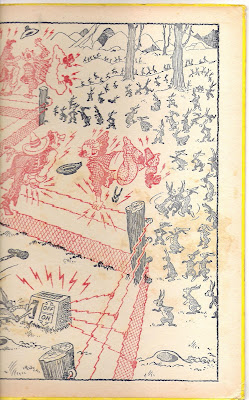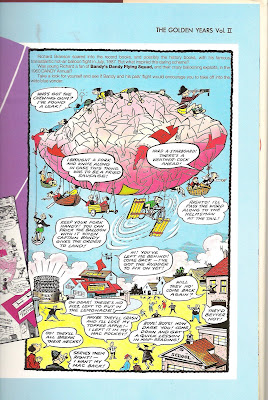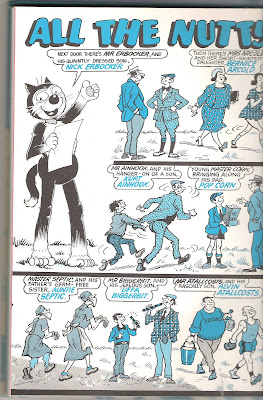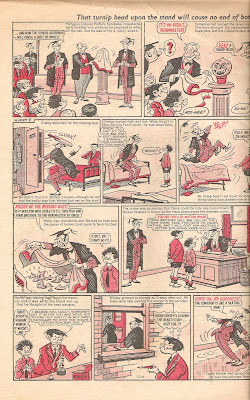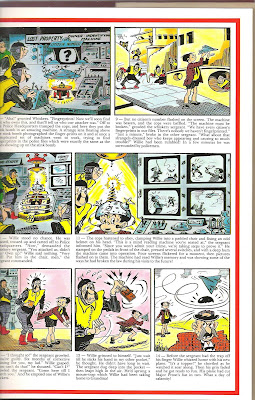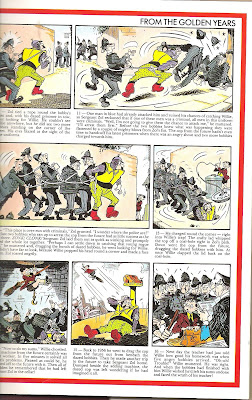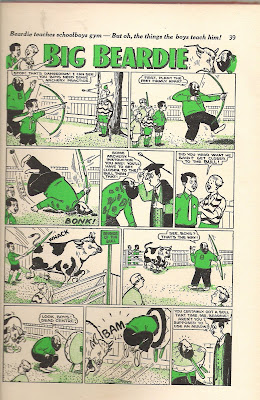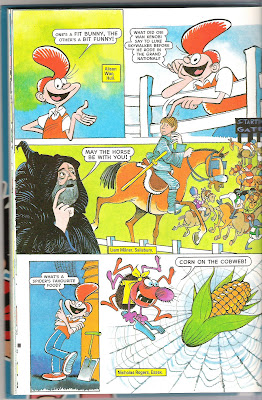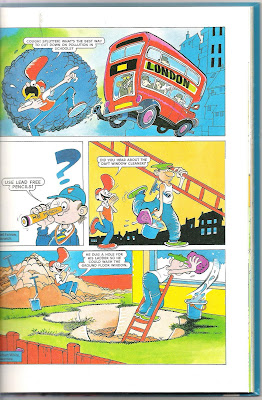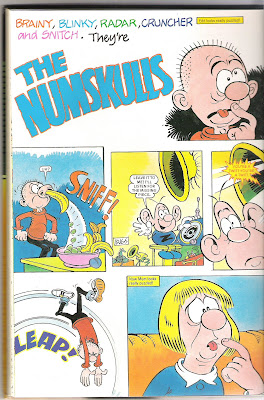Image form Dandy and Beano Magic moments annual.
Drawn of course by Leo Baxendale.
The fact that from the late 1950's onwards Thomsons stored a version of the original artwork on film made no difference to how they produced the comics. It was only a secondary and more easily accessible method of storing artwork that had already been used.Thanks Kashgar for the info.
In the 1930's and 1940's and indeed the 1950's, 1960's and 1970's the actual production of a comic from the original artwork began in Thomson's process dept in Dundee. It was here that the original artwork was photographed and reduced onto a light sensitive metal plate and it was from this plate via chemical etching that the final printing plate was produced.
Once the printing plate was produced it was then used, if colour needed to be added to a page, to stamp out a very thin piece of papier mache called a flong and any colours that needed to be added, four for covers and usually single colours elsewhere would each be added, a colour at a time, to a seperate version of this flong.
The printing plates and the flongs would then be sent, from Dundee, to Thomson's two main printing works in Manchester and Glasgow were they would be used to set up the presses for printing.
If anyone has copies of old Dandys and Beanos in their possession you might well find if you peruse some of them that any added colour is sometimes offset a little from the artwork beneath and this is almost always because of the shortcomings of using papier mache flongs. Thomsons sent the printing plates and flongs to their printing works by train and in very cold weather or hot humid conditions the flongs had a tendency to expand or contract a little while in transit and as a consequence any plate produced from them at the printing works was similarly wrong-sized from the original art plate from which it was produced, thus making the colour either bleed or contract in the finished comic from its position on the original artwork.
In the very early days, i beleive they took a picture and engraved the lines into wood (or else the picture was engraved into wood to start with). Metal (melted antimony) was then poured over the wood block and when it was solidified the lines of the picture where "facing downwards" from the block, which could then be added to the press. I should think they had a slightly more high-tech process by the 30's, though. thanks felneymike
http://www.comicsuk.co.uk/Forum/viewtopic.php?f=1&t=1896
A close up of a Pansy Potter in wonderland panel by Jimmy Clark.
Notice some colours are slightly out due to what was mentioned by Kashgar.





